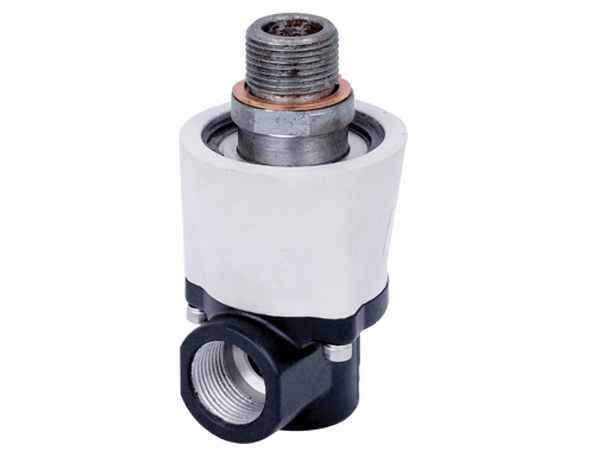|
A rotary union is a contraption that gives a seal between a decent stock section and a turning part, in this manner allowing the trading of fluid. It goes by an immense number of names, genuinely dependent upon industry and application. These include Swivel joint, rotary coupling, fluid turn, rotary complex, etc. Regardless, the fundamental justification for a rotary union goes on as in the past: Deliver media from a proper commitment to a turning part. A rotary union is intended to believe in the media to be moved, rotational speed, strain and temperature, and the number of stream ways. The principal parts are:
Where Are Rotary Unions Used? Rotary unions are used across a couple of business areas including current motorization, food and reward, elective energy, oil and gas, and flight and security. They are used so generally ignoring their impact on staff and structure usefulness is straightforward. We are the leading rotary union manufacturers in India. Computerized Numerical Control (CNC) Machine Cooling
The coolant ought to be passed on to parts made of metal and various materials going through machining. This fluid thwarts overheating, stays aware of layered adequacy, and gets together machined garbage. Bottle Filling and Capping Hack syrup, chemical, and soda pop rewards are bundled and thusly covered through motorized structures. Rotary unions are utilized to deal with the significant fluid from a central stock into these compartments as they move along a vehicle. Hydro Dam Turbine Control Hydroelectric dams adapt power as water streams across turbine front lines. Pressure-driven lines are used to control the opening and closing of doorways and the coming of streams of water. Floating Production Storage and Offloading (FPSO) Toroidal turns are utilized in getting systems toward the ocean vessels which accumulate oil and gas from subsea supplies. These marvelous systems work under crazy stream rates while going through huge mechanical nerves. Softened Natural Gas (LNG) Loading Arms Stacking arms are used to move fluid cargo to and from offshore vessels, large hauler trucks, and rail course vehicles. They ought to outfit strong transport of cargo with discharge-free fixing. Radar Cooling Systems Electronic systems on convenient units are in steady use, make heat, and in like manner require cooling structures. Cooling electronic structures in these applications incorporate specific plans. Working limits contrast subject to the specific application. Strain can go from 0 to 20,000 psi and temperature from - 150 to 400˚F. Rotational speeds all around fall in the extent of 0 to 1000 rpm. Fluids could consolidate water, oil, coolant, or a few other flowable media that wanted to be moved. Stream sections could number from one (1) to ten (10) or more. Different factors ought to be seen in the arrangement of a rotary union, of which the fixing parts may be the most huge. Material Selection in Rotary Seals While OK for by far most static applications, traditional strain seals like O-Rings are not routinely adequate for rotary fixing. Disintegration which causes wear and force advancement can limit the presence of flexible seals in direct contact with the shaft, and seal smash and stretch whereupon pressure seals depend can furthermore intensify this issue. The photos underneath show examples of O-Ring scratched region and tension set. These are a direct result of outrageous wear and conceivably heat improvement, exclusively, and both can provoke inopportune seal dissatisfaction. Scouring is described as the resistance of relative development between two surfaces. The lower the coefficient of crushing, the more direct it is for surfaces to slide north of one another. We want disintegration while walking around our viewpoint or driving in our vehicle to stay aware of dauntlessness and control. Nevertheless, focusing on seals causes mileage and as such decreases life. Polytetrafluoroethylene (PTFE) is a thermoplastic material with an extremely low coefficient of disintegration. Likewise, it performs remarkably in rotary fixing applications. Spring-Energized Seals and Design Considerations A spring-empowered seal (SES) includes a coat, regularly machined from PTFE. A spring is implanted to enable the seal's lips, in this way keeping them in contact with the seal organ and shaft. This gives a for the most part low scouring fixing game plan. Despite better interesting life versus ordinary tension seals, these low scouring seals achieve less stick-slip issues and less motor power use. That interfaces with less mileage on stuff and systems. It should be seen that PTFE can be changed with fillers, for instance, carbon, graphite, molybdenum disulfide, and polyimide to underline explicit properties moreover. Series 100-Cantilever Spring-Energized Seal
0 Comments
Leave a Reply. |
AuthorWrite something about yourself. No need to be fancy, just an overview. Archives
June 2022
Categories
All
|


 RSS Feed
RSS Feed
